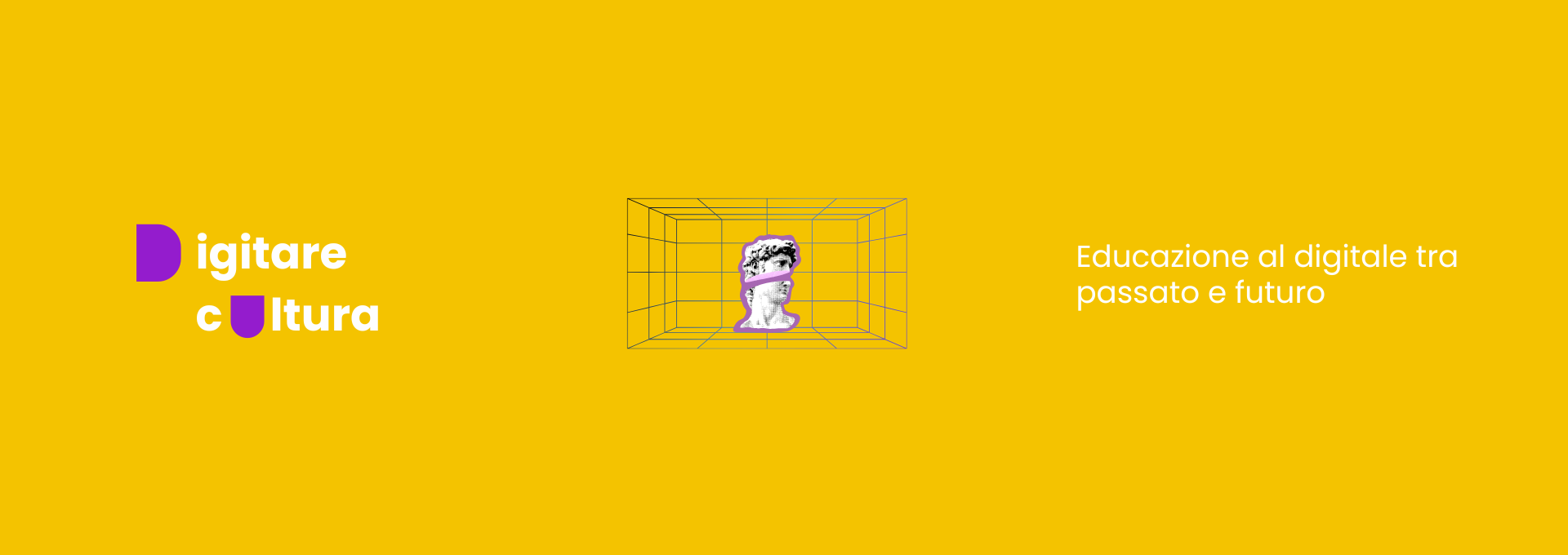

Digitare Cultura is a training initiative focused on the use of digital technologies to tell stories, enhance, and make cultural heritage more accessible. Aimed at high school and university students, the project offers a journey that bridges theory and practice, weaving together innovation, creativity, and memory through lectures, hands-on workshops, and experimentation on a real case study: the "Museo della Civiltà Contadina" in Matera. Promoted by the Matera Basilicata 2019 Foundation, the project is co-financed by the Fondazione Banco di Napoli.
The “Digitare Cultura” project gave students a concrete opportunity to develop digital skills within the cultural field, experience collaborative teamwork, explore emerging professions, and actively contribute to heritage enhancement. TARGET GROUPS
The project engaged 60 students selected from over 80 applicants from Basilicata and the Murgia area of Apulia. Participants were enrolled in high school and university courses related to cultural heritage, anthropology, architecture, and art history. WHAT WE DID
The programme included:
• 14 online lectures with professionals from the cultural and digital sectors
• 16 hours of project workshops, featuring online activities and two in-person sessions
• Access to the Basilicata Digital Academy platform, with dedicated e-learning content
During the lectures, students explored how digital technologies can reshape the way cultural heritage is narrated, preserved, and promoted. They learned from real-world case studies—from interactive museums and gamification to accessible digital archives, audiovisual content production, and the use of AI in art. The project fostered a continuous dialogue between technology, creativity, and local identity, while offering practical insights into emerging cultural professions.
WORKSHOPS
Four thematic workshops allowed students to apply their knowledge in a real-world context: the "Museo della Civiltà Contadina" in Matera.
![]() Podcast – Design and production of Civi.Co 60, a narrative video podcast inspired by objects in the museum.
Podcast – Design and production of Civi.Co 60, a narrative video podcast inspired by objects in the museum.
![]() Storytelling – A workshop on cultural storytelling to make heritage more engaging and accessible.
Storytelling – A workshop on cultural storytelling to make heritage more engaging and accessible.
![]() Website – Design of an immersive and user-friendly digital platform to narrate the museum online.
Website – Design of an immersive and user-friendly digital platform to narrate the museum online.
![]() Curatorship and Catalogue – Development of an innovative catalogue that gives new meaning to the museum’s collection.
Curatorship and Catalogue – Development of an innovative catalogue that gives new meaning to the museum’s collection.
THE CASE STUDY: The "Museo della Civiltà Contadina" in Matera
The operational heart of the project, the museum served as the basis for all workshops. Students, guided by expert tutors and working in teams, created contemporary tools and narratives to enhance the museum's stories and objects.
Founded by the Cascione family in 1998 and located in the heart of the Sassi of Matera, the "Museo della Civiltà Contadina" houses a rich collection of objects reflecting rural life.
Situated within Palazzo Barberis, the museum is more than a display space: it is a living center of memory, research, and cultural transmission. Born from a deep passion for the region’s roots, it recounts an era marked by hard work, manual skill, and a strong sense of community. FOCUS ON WORKSHOPS
![]() PODCAST
PODCAST
In the podcasting workshop, students designed and produced Civi.Co 60, a video podcast inspired by items in the museum’s collection.
Over eight sessions, participants explored the entire creative process—from collective brainstorming, reading aloud, story mapping, and collaborative writing, to sound design and interviews.
Each episode starts with a museum object—such as a barber’s chair, brazier, or oil lamp—that becomes a narrative voice, offering a glimpse into the trades and rituals of everyday rural life. These stories are enriched by interviews with contemporary witnesses: artisans, barbers, and young professionals who connect the past to the present.![]() STORYTELLING
STORYTELLING
The storytelling workshop resulted in "GIOCAMUSEO", a narrative kit composed of five card sets designed to engage local communities and travelers in rediscovering the museum through collaborative storytelling.
Through a co-design process, students explored storytelling as a tool for connection and participation, creating a playful experience aimed at audiences aged 9 and up.
Characters, professions, objects, and scenarios inspired by the museum's collection were transformed into cards to foster a shared imagination—looking to the past to envision more just and caring cultural futures rooted in local identity.![]() WEBSITE
WEBSITE
The web design workshop focused on creating a website for the museum—not just as a digital showcase, but as an active platform for cultural engagement and participation.
Students worked on developing a digital strategy with attention to usability, accessibility, and user experience. The result included intuitive interfaces, multimedia content, and a narrative aligned with the museum’s identity. The site aims to guide and intrigue visitors, encouraging them to explore further, book visits, and stay connected.
![]() CURATORSHIP AND CATALOGUE
CURATORSHIP AND CATALOGUE
This workshop imagined a new kind of museum catalogue—an engaging, accessible guide designed for a wide audience and offering a personalized visiting experience.
The students developed a bilingual (digital and print) publication featuring both visual and textual storytelling of the museum’s objects, following a narrative journey from home life, to the fields, to the workshops.
Interactive cards and fill-in materials bring the catalogue to life beyond the visit. It's an illustrated narrative that blends guidebook, storytelling, and catalogue into a dynamic, evolving tool—one where each object continues to speak through the eyes of its visitors.